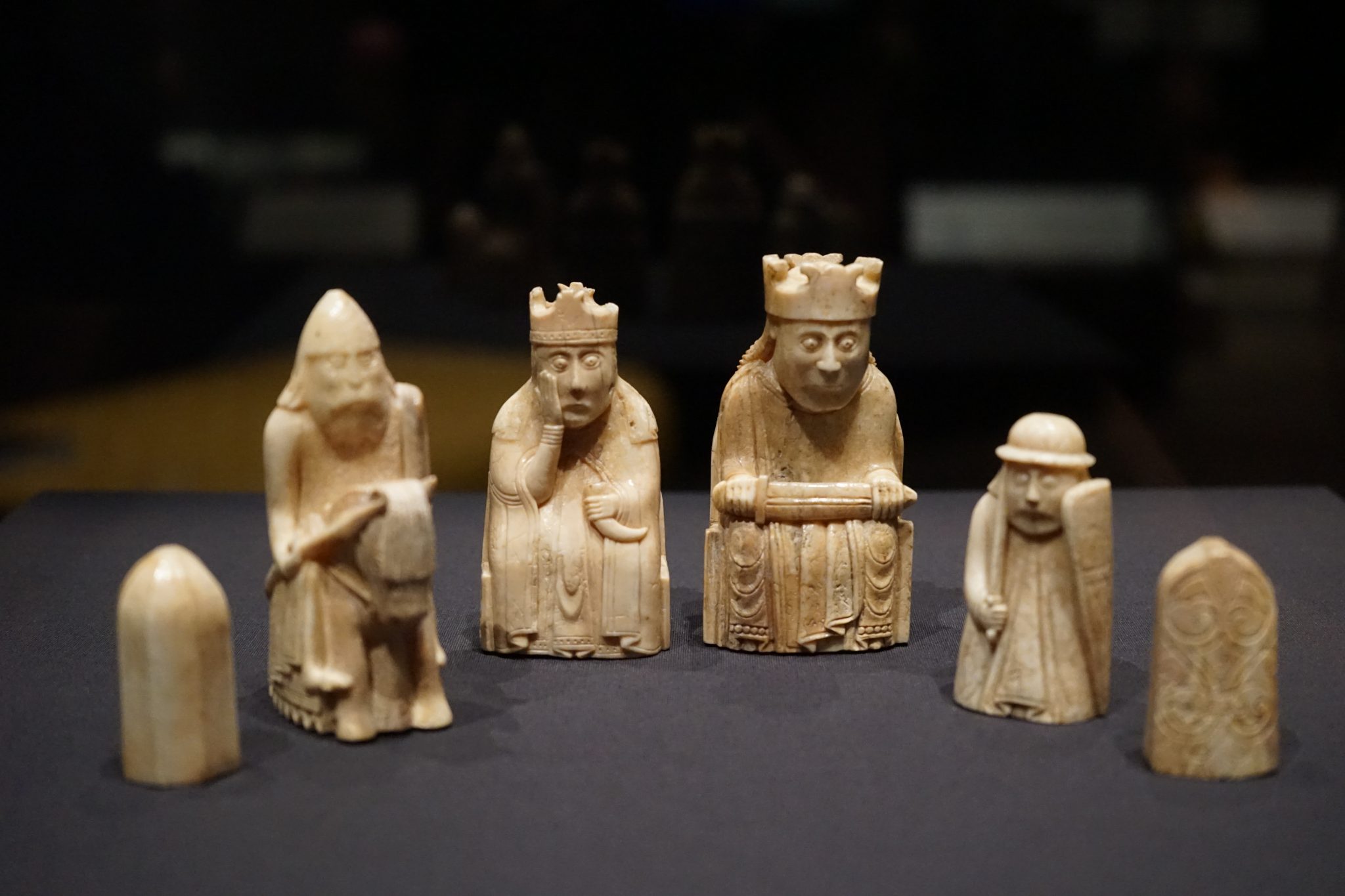The British Museum’s first blockbuster exhibition in their new temporary exhibition gallery received plenty of publicity, mostly about the arrival of the longest Viking longship ever discovered – or at least, the 20% of its wooden frame that survives, plus a reconstruction of the rest – from Denmark. A new gallery, a giant longship, and Vikings! How could a group of Classicists resist…?

The exhibition started by looking at the Vikings, not as the archetypal bloodthirsty-warriors-sacking-monasteries, but as people in contact – whether through warfare, trade, or a mixture of the two – with an incredibly wide range of areas, from their Scandinavian homeland to Istanbul, from Russia to Iceland, Greenland and America, and everywhere in between. This was nicely illustrated by comparisons of Viking artefacts with, e.g., Frankish ones, and in particular by a series of hoards containing silver from, in one case, as far away as Pakistan. Two cases I liked looked at the extent to which a homogenous ‘Viking culture’ existed by comparing women’s grave goods – two graves from Russia and Scandinavia had almost identical items, but two from different areas of the Baltic were strikingly different from the other two and each other, a nice reminder that the Vikings may have had a good deal in common but weren’t really a single people. The exhibits were accompanied by quotes on the walls – some taken from sagas or skaldic poetry, others, particularly interestingly, from Arabic writers describing their interactions with Vikings.
After a section of shiny gold stuff (officially to do with ceremonies and the expression of power, but really, that was just the excuse for lots of shiny gold stuff) and a few objects to do with drinking, gaming, etc (accompanied by some wonderfully grumpy quotes about not drinking too much from a Norse collection of proverbs) came the central feature of the exhibition – the ship:

Opinions about the ship were divided. To some extent I share the view that a more complete, but smaller, ship would have been nice to see, but actually there’s quite a bit of the lower hull preserved (you can see it better from the other side than in this picture), and I thought the visual effect of the reconstructed skeleton was fantastic – quite apart from being aesthetically very nice in the space, it gave a really good sense of the sheer scale involved (36m long). Coming out from the narrow, winding corridors of the first section to see this was pretty impressive. Alongside the ship was some information about shipbuilding and bits of other ships, and then the second half of the exhibition, dealing with the Vikings as warriors, social/political changes in Viking society, and the Viking religion(s) and contact with/eventual conversion to Christianity.
This second half was where the exhibition, for me, really started to struggle. Up until that point there’d been a fairly cohesive narrative of Viking trade and cultural contact; going back to the more familiar image of the Vikings as warriors by means of the longship seemed a natural progression, but after that things got rather bitty. All of the stuff about social change and religion felt like it would have gone much better in the first half: this way, it was as though neither religious nor social/political change was at all connected to trade, settlement, or external contacts, and the exhibition just sort of trailed off into the gift shop via some Lewis chessmen and a board about Norse place-names in the U.K.
The first half, too, had some difficulties, mainly to do with labelling and layout. The brief for the exhibition was clearly fairly minimalist; either that or the new gallery’s cases have been made to a standardised size and they just didn’t have enough objects to put in them, because some things looked rather lost in the huge cases. Labelling was equally fairly minimal at times – particularly with the hoards, whose contents were neatly arranged into groups corresponding (I think) to places of origin, but could have done with a label next to each one indicating where these places were (maps showing this were good, but not always provided). One nice touch was that some cases had the labels repeated going up the front of the case as well as at the bottom, so you could read them while waiting to see the actual objects. Because, yes, there was a LOT of waiting. To be fair, we did make the mistake of visiting on the Sunday of a Bank Holiday weekend in half term; but it didn’t seem like there were actually too many people there, more that the layout – a series of narrow, winding ‘corridors’ with cases on one or both sides – was inevitably going to lead to a lot of queueing to see things. The first two rooms in particularly seemed to have been designed to create a bottleneck; and ok, this may be nit-picking, but the dark grey colour scheme didn’t really help it feel less oppressively narrow and crowded. But there are always going to be teething difficulties with using an entirely new space, and since this new gallery is much more flexible than the Reading Room, hopefully future exhibitions will learn from this one and use the (very large) space more effectively.
Despite that, though, there were some amazing objects you won’t get to see any time soon without going to Denmark. Plus while you’re there you can check out the excellent new Sutton Hoo and Europe (AD 300–1100) Gallery, which, as well as the spectacular finds from the Sutton Hoo ship burial, contains my favourite object of the whole day: a sword with the Futhark (runic alphabet) inlaid on it in gold. Swords, runes, and swords with runes – what more can you really ask for from a day out at the museum?


